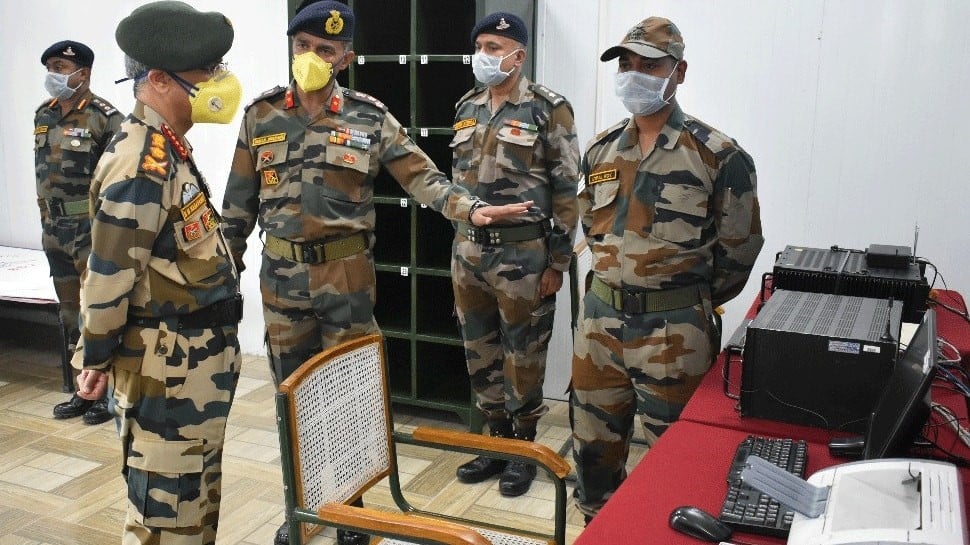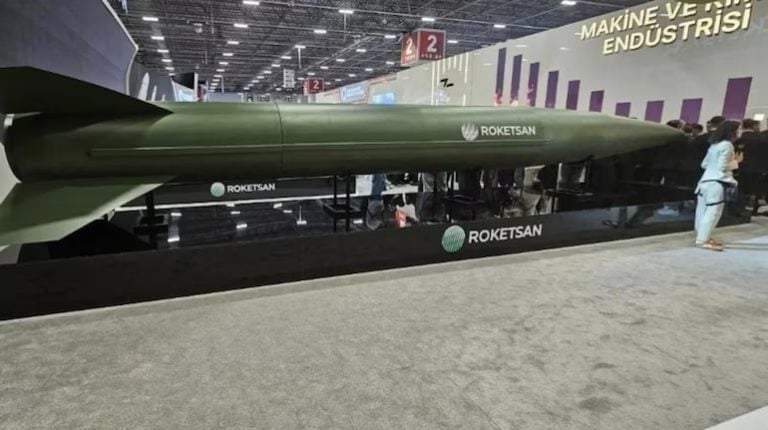The structure and organization of the Indian Army are pivotal in ensuring its operational effectiveness and readiness. At the heart of this structure lies the concept of Field Formation, which plays a crucial role in the Army’s ability to respond to various challenges, both in peacetime and during conflict.
Understanding field formations involves delving into their types, functions, historical evolution, and their significance in contemporary military operations. This article aims to provide an in-depth exploration of field formations in the Indian Army, highlighting their importance and the nuances that define them.
Also Read | Indian Army: Why Alcohol Isn’t Banned
Understanding Field Formation
Field formations are essentially the organizational units within the Indian Army that are designed to conduct military operations. These formations are structured to facilitate command, control, and coordination among various elements, ensuring that the Army can effectively mobilize and execute its missions.
Types of Field Formations
The Indian Army comprises several types of field formations, each tailored for specific operational needs. The primary formations include:
- Divisions: These are the backbone of the Army’s field structure, typically consisting of 10,000 to 20,000 troops. Divisions are further broken down into brigades, battalions, and companies, allowing for flexibility and adaptability in various combat scenarios.
- Brigades: A brigade is a smaller unit within a division, usually comprising 3,000 to 5,000 soldiers. Brigades are versatile and can operate independently or as part of a larger formation.
- Battalions: These are the fundamental units that make up brigades, consisting of about 800 to 1,000 personnel. Each battalion is specialized, focusing on specific operational roles such as infantry, artillery, or armored units.
- Regiments: Regiments serve as specialized units within the Army, often focusing on a specific type of warfare or operational role, such as engineering, signals, or medical support.
The Command Structure
Field formations operate under a well-defined command structure that ensures effective leadership and decision-making. Each formation has a commanding officer who is responsible for the operational readiness and discipline of their unit. This hierarchy facilitates clear communication and swift execution of orders, which is crucial in combat situations.
Historical Evolution of Field Formations
The evolution of field formations in the Indian Army can be traced back to its colonial roots. The British Indian Army established many of the foundational structures that continue to influence the Army today.
Colonial Origins
During the British Raj, the Indian Army was organized primarily for colonial defense and maintaining order. The structure at that time was heavily influenced by British military practices, which emphasized the importance of discipline and hierarchy. This early organization laid the groundwork for modern field formations.
Post-Independence Developments
After gaining independence in 1947, the Indian Army underwent significant restructuring to reflect the nation’s sovereignty and strategic needs. The focus shifted towards building a robust defense mechanism capable of addressing regional threats and internal security challenges. This led to the formation of specialized units and the reorganization of existing structures.
Modernization Efforts
In recent decades, the Indian Army has embraced modernization to enhance its operational capabilities. This includes adopting new technologies, improving training methodologies, and restructuring field formations to better respond to contemporary threats such as asymmetric warfare and cyber threats.
Roles and Responsibilities of Field Formations
Field formations in the Indian Army are tasked with a wide range of responsibilities that are critical to national security. These roles encompass offensive and defensive operations, peacekeeping missions, and humanitarian assistance.
Offensive Operations
Field formations are primarily designed to conduct offensive operations against enemy forces. This involves planning and executing strategies to penetrate enemy defenses, seize territory, and disrupt supply lines. The ability to mobilize quickly and effectively is essential for success in these operations.
Defensive Operations
In addition to offensive capabilities, field formations are also responsible for defensive operations. This includes fortifying positions, conducting reconnaissance, and preparing for potential enemy attacks. The emphasis on defense ensures that the Army can protect its territory and maintain strategic advantages.
Peacekeeping and Humanitarian Assistance
The Indian Army has been involved in numerous peacekeeping missions both domestically and internationally. Field formations play a crucial role in these operations, providing security, stability, and humanitarian assistance in conflict-affected areas. This aspect of their responsibility highlights the Army’s commitment to global peace and security.
Also Read | What Is a No-Fly Zone and Why Is It Important?
The Significance of Field Formations
The significance of field formations in the Indian Army cannot be overstated. They are essential for maintaining operational readiness and effectiveness in various scenarios.
Strategic Flexibility
Field formations provide the Indian Army with strategic flexibility. The ability to deploy different types of formations based on the operational context allows the Army to adapt to changing threats and challenges. This flexibility is crucial in an era where conflicts can arise unexpectedly.
Enhanced Cohesion and Morale
The organizational structure of field formations fosters a sense of belonging and camaraderie among soldiers. This cohesion is vital for maintaining morale, especially during challenging deployments. Soldiers who feel connected to their unit are more likely to perform effectively and demonstrate resilience in the face of adversity.
Training and Development
Field formations serve as the primary training ground for soldiers. Through rigorous training exercises and simulations, personnel develop the skills necessary to operate effectively in combat. This emphasis on training ensures that the Army maintains a high level of preparedness for any situation.
Contemporary Challenges Facing Field Formations
While field formations are integral to the Indian Army’s success, they also face several contemporary challenges that require attention and strategic solutions.
Evolving Nature of Warfare
The nature of warfare is constantly evolving, with new technologies and tactics emerging regularly. Field formations must adapt to these changes, incorporating advanced technologies such as drones, cyber warfare capabilities, and artificial intelligence into their operational strategies.
Resource Constraints
Resource constraints can impact the effectiveness of field formations. Budget limitations, equipment shortages, and logistical challenges can hinder the Army’s ability to maintain operational readiness. Addressing these issues requires strategic planning and prioritization of resources.
Recruitment and Retention
Attracting and retaining skilled personnel is a significant challenge for the Indian Army. As the job market becomes increasingly competitive, field formations must implement effective recruitment strategies and create an environment that fosters career development and job satisfaction.
Future Directions for Field Formations
Looking ahead, field formations in the Indian Army must continue to evolve to meet the demands of modern warfare and security challenges.
Embracing Technological Advancements
The integration of technology into field formations will be paramount for future success. This includes investing in advanced weaponry, communication systems, and training programs that leverage virtual reality and simulation technologies.
Fostering Joint Operations
As conflicts become more complex, the ability to conduct joint operations with other branches of the armed forces and allied nations will be crucial. Field formations must develop strategies for effective collaboration and coordination with air and naval forces.
Enhancing Community Engagement
Building strong relationships with local communities is essential for the success of military operations, especially in peacekeeping and humanitarian missions. Field formations should prioritize community engagement initiatives to foster trust and cooperation with civilians.
Also Read | All About Indian Army Regiments
Conclusion
Field formation in the Indian Army is a complex and multifaceted component of military operations. From their historical evolution to their contemporary significance, field formations play a vital role in ensuring the Army’s readiness and effectiveness. As the landscape of warfare continues to change, the Indian Army must remain agile and adaptive, embracing new technologies and strategies to meet the challenges of the future.
FAQs
1. What are the primary types of field formations in the Indian Army?
Field formations primarily include divisions, brigades, battalions, and regiments, each serving distinct operational roles.
2. How do field formations contribute to the Indian Army’s effectiveness?
Field formations enhance operational readiness, provide strategic flexibility, and foster camaraderie among soldiers, which is essential for morale.
3. What challenges do field formations face today?
Contemporary challenges include the evolving nature of warfare, resource constraints, and difficulties in recruitment and retention of personnel.
4. How can field formations adapt to future warfare?
Field formations can adapt by embracing technological advancements, fostering joint operations, and enhancing community engagement initiatives.
5. Why is the historical evolution of field formations important?
Understanding the historical evolution of field formations provides insights into their current structure and operational effectiveness, reflecting the lessons learned from past conflicts.






















